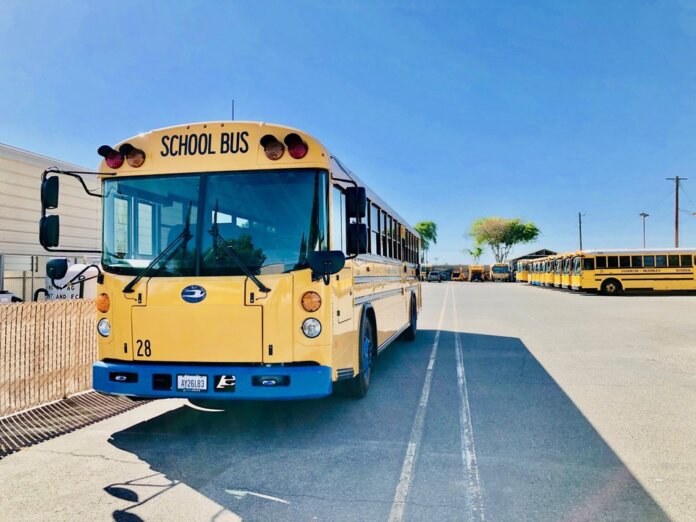
[ad_1]
Nuvve Corp., a San Diego-based green energy technology company, is providing complete solutions for school districts and utilities to deploy electric school buses that can provide significant benefits to the electric grid and help curb the need for utility providers to force rolling blackouts on their customers.
During normal years, let alone in the midst of a pandemic when people are staying at home for more hours per day, electricity shortages become a real issue in hot temperature months. When people are home, they turn on their air conditioning, do the laundry, wash the dishes and more which creates a large peak of demand in the evening which is when renewable energy source power production is low.
Nuvve’s vehicle-to-grid (V2G) technology was designed to mitigate these spikes in energy demand. The V2G enables electric vehicle (EV) batteries to store and discharge energy to the grid. Nuvve’s solution also enables EV batteries to provide grid services such as frequency regulation and demand response and facilitates smart charging so EVs can charge during non-peak times and then discharge stored energy when demand on the grid is high. In short, V2G increases grid resilience and supports renewable energy sources.
“Electric school buses offer a unique solution to the power problems we are seeing right now with the electric grid being stretched to the limit. For places like California that are prone to late summer and early fall heat waves, charging with V2G can turn the buses into mobile power storage units and help utilities and their customers,” says Gregory Poilasne, chairman and CEO of Nuvve Corp.
“In addition to our new 60 kW DC charging solution, the GIVe platform is purpose-built to be open for any OEM as well as protocol agnostic, meaning its role in helping slow down climate change could be limitless if industries and regulators get on board,” he adds.
Electric school buses offer a prime storage solution to enable V2G grid services because they have large batteries that stay parked and connected to charging stations most hours of the day. They also have the potential to act as a virtual power plant (VPP) by aggregating vehicle batteries across a region to provide energy when needed. Electric school buses, then, could be deployed before power outages occur in areas that are experiencing high demand with low power availability. In the future, electric buses could even provide emergency power back-up for areas that have already lost power. While many schools around the country are closed for in-person learning during the pandemic, electric buses could still be of service in this unique way.
Nuvve has several commercial V2G charging solutions available including the new RES-HD60-V2G – a V2G 60 kW, high-power DC charging station for electric school buses and other medium- to heavy-duty fleet vehicles. The new charging station combines the DC power converter system (PCS) hardware from Rhombus Energy Solutions and Nuvve’s V2G GIVe platform which is what enables the bidirectional control of energy between EV batteries and the electric grid. Rhombus recently announced the certification of this charging station by Underwriter Laboratories UL 1741 and 1741-SA standards.
Nuvve has a full range of solutions that includes standard offers such as charging stations alone, or added options that include service, maintenance, energy management and fleet management tools – all offered as a financed bundle to customers. Since Nuvve’s V2G platform can operate with multiple vehicle and charging station OEMs, school districts and utilities can get everything they need to deploy a fully-functional electric fleet.
Photo: An electric bus
[ad_2]
Source link
